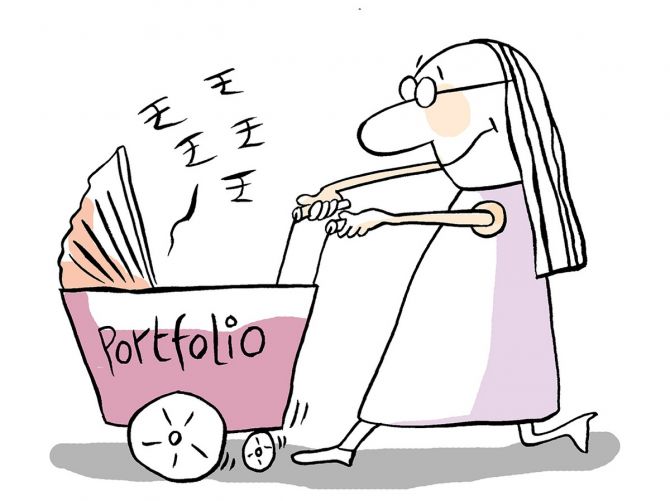'Investors can consider staying invested in long duration products as there is a possibility of rate cuts in the near term.'

Positive macros — lower inflation, high forex reserves and favourable demand-supply dynamics for government bonds — make a strong case for rate cuts from December, says Devang Shah, head of fixed income, Axis Mutual Fund.
In an interview with Abhishek Kumar in Mumbai, Shah says this view may not hold true if commodity prices go up sharply.
What are the key takeaways from the latest policy announcement by the Reserve Bank of India (RBI)?
The change in RBI’s stance was likely driven by the favourable outlook on inflation.
Though the RBI governor sounded caution on consumer price index (CPI), we believe that CPI trajectory would remain comfortably closer to 4.5 per cent for the rest of the year.
In the last 12 months, core CPI has been below 4 per cent and if we exclude the volatile items, especially food and fuel, the CPI trajectory looks comfortable till March 2025.
Good monsoon and seasonality could lead to a fall in food inflation next month onwards.
This, in turn, will lead to a fall in headline CPI back to 4.5 per cent in the last quarter.
How do you see the debt market dynamics and is there any visibility on rate cuts?
We believe that macro dynamics for rates is positive on account of lower CPI (closer to RBI target of 4 per cent and core inflation now below 4 per cent for 12 months).
It is also because of a stable external sector ($700 billion of forex reserves), easy global monetary policy cycle and favourable demand-supply dynamics for government bonds.
We believe December onward every MPC policy is live for rate action and expect 50 basis points (bps) of cut till March 2025.
How are your portfolios positioned from a duration perspective?
We have been maintaining a long rate view since January 2024 and have been running higher duration across all our funds.
We continue to hold our view and expect a 50 bps rate cut till March 2025.
How do the three high quality bond segments — sovereign, state development loans (SDLs) and AAA — compare right now?
We are positive on sovereign bonds as demand-supply dynamics are favourable.
This is due to fiscal consolidation, increased foreign portfolio investor (FPI) participation and possibility of higher demand on account of change in banks’ liquidity coverage ratio (LCR) guidelines.
We expect SDL spreads to widen a bit from the current 35 bps on higher Q4 supply.
Has the inclusion in FTSE Russell index added to the attractiveness of sovereign bonds?
Addition of Indian government bonds to FTSE Russell index is definitively positive.
It could lead to inflows of around $4-5 billion starting September 2025.
Indian macros are quite favourable and offer high real rates.
We believe that macros and addition to Index increases the probability for our bonds to get added to the main Bloomberg GBI index, which can attract $20-30 billion of flows next year.
Which part of the yield curve is the most attractive right now?
We expect rate cuts of 50 bps till March 2025.
We also believe that the rate cut cycle would be shallow and hence prefer 5-year and above duration sovereign bonds for now. Post the first rate cut, 1–3-year corporate bonds may get attractive.
What is your take on lower-rated papers — do they make a good investment case?
We are neutral on credit cycles and credit spreads.
And, we expect them to perform well, post the rate cut cycle.
Currently, we prefer long sovereign bonds over lower-rated papers.
Is this the right time for investors to lock in higher yields by investing in longer duration funds/papers? Do you see any risks emerging (which can lead to spike in yields)?
Long bond yields have rallied by more than 40 bps since the beginning of the year.
Hence, incremental gains would be limited and flow with rate cuts.
Positive macros and favourable demand-supply dynamics would lead to yields drifting lower.
We expect 10-year government bond yields to move closer to 6.5 per cent by March 2025.
Investors can consider staying invested in long duration products as there is a possibility of rate cuts in the near term.
However, any surge in commodity prices, be it due to China fiscal measures or geopolitical tensions, can break the disinflation process.











